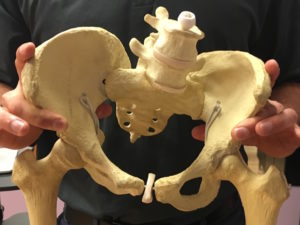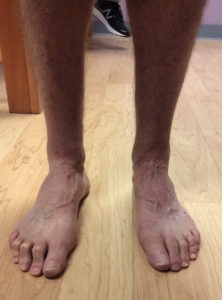As I write this we are approaching the 100-day point before the running of one of the largest mini-marathons here in Indianapolis. Thousands of runners are training and making their preparations to run 13.1 miles including as stretch around the famous Indianapolis 500 track.
They’re also getting injured.
It’s a drawback of the inspiration and excitement of setting a goal and working toward it. Many runners just aren’t prepared to make such drastic changes in their physical workload to tolerate such training. Some tolerate it and finish the race. Some don’t because of injury.
One of the most common diagnoses in runner’s is often termed IT Band Friction Syndrome that results in pain on or around the outside of your knee. Let’s break down what this condition really is, and what it is not.
What is the IT Band?
The IT band is a thickening of the fascia lata. That’s what we medical people call the connective tissue that surrounds the thigh muscles. If you’ve ever peeled the skin off of a chicken breast, the fascia is that filmy “second skin” that you can poke your finger through but have a tough time tearing it off the chicken breast.
The IT Band runs down the outside of your thigh from your hip to your knee. At the hip, two muscles, the tensor fascia lata (TFL) and the gluteus maximus (aka your butt), attach directly to the IT Band.
What is IT Band Friction Syndrome?
It was once believed that the end of the IT Band at the knee rubbed across the big rounded end of the femur (your thigh bone), or the femoral condyle. When you bend and straighten your knee repetitively as in running long distances, this rubbing would then result in inflammation of the irritated IT Band.
This actually isn’t true.
The IT Band cannot rub across the femoral condyle down by the knee because it’s attached to the femur above the knee and directly to the condyle. What actually a happens is that when the knee is bent about 30 degrees, the IT Band tenses and compresses a pad of fat (like the fat pads on your heel) between the IT Band and the femur. This fat pad is filled with nerves and blood vessels, so if the compression becomes severe enough, the area will be painful and may even swell.
So we can still call it IT Band Syndrome if you like but let’s drop the friction part.
Why doesn’t the knee hurt all the time?
Believe it or not, some people get this type of IT Band related knee pain without ever running and it can become a chronic knee pain. All it takes is a common asymmetry in the pelvis. This asymmetry arises from our normal anatomy, our response to stress, and can be augmented by our activities like distance running.

A “twist” in the pelvis can affect the way we shift our weight from side to side as well as alter the position of the knee, ankle, and foot. Many runners find that they have difficulty controlling excessive or prolonged pronation of the foot, or they have a supinated foot that doesn’t absorb the stress of running as well. These foot positions are often a result of the asymmetrical pelvic position and merely add to the strain and tension on the IT Band resulting in pain.

What should I do?
The most common recommendation is that you should stretch your IT Band and strengthen the hip muscles.
First and foremost, don’t attempt to stretch your IT Band. It won’t stretch. It’s designed not to stretch in fact. To truly alter the IT Band requires a scalpel.
Secondly, while you may have a testable weakness in the hip, it is usually the result of the position of the joint due to the commonly found asymmetry in the pelvis. Random strengthening will do little. You must first identify any issues that may be interfering with normal movement and loading through your pelvis, hips, and legs. This must first be restored and then if reconditioning, including strengthening activities, is warranted, this should be completed before returning to your race preparations.
0 Comments
Join the conversation